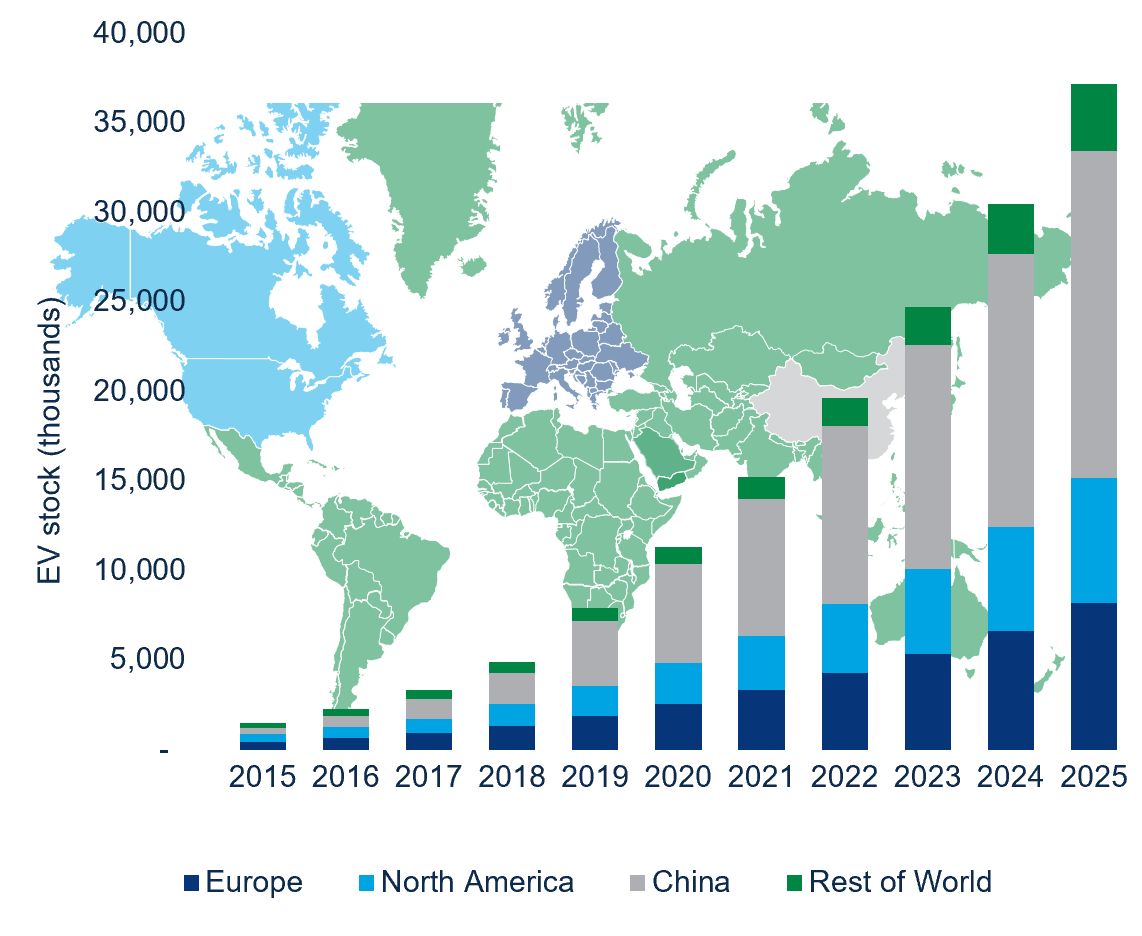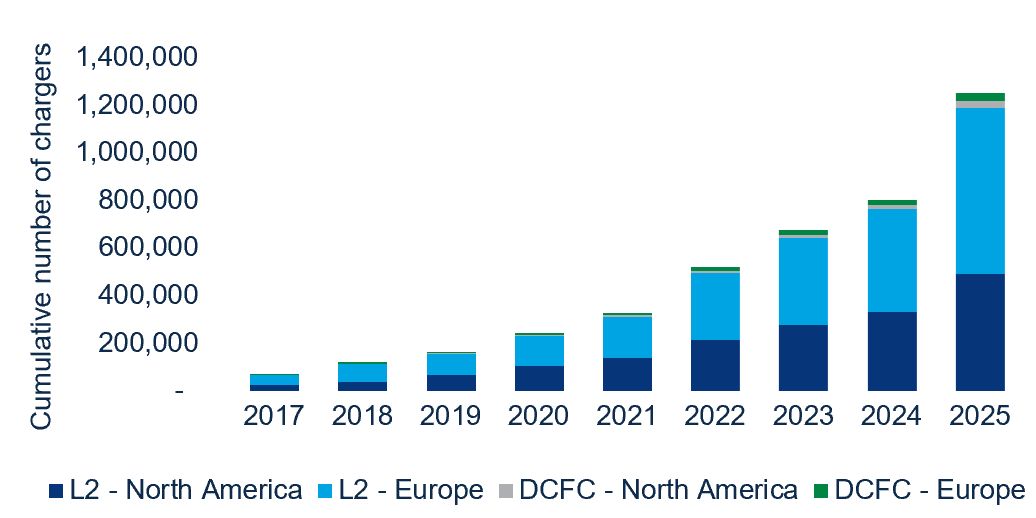
WoodMac: Workplace EV Charging Is on the Rise
New research finds significant growth potential in the North American and European workplace EV charging markets.
There were nearly 5 million light-duty electric vehicles on the road as of the end of 2018 — roughly 50 percent more than the year before. Wood Mackenzie now expects the global EV stock to surpass 37 million by 2025.
That’s 37 million drivers looking for suitable places to charge their cars. The electric vehicle (EV) revolution depends on getting the right infrastructure, in the right locations.
Drivers who don’t have a convenient private driveway available will turn to workplace and commercial charging. A new Wood Mackenzie report on workplace charging finds that there is a business opportunity for workplaces that give their staff and customers a place to plug in.
Charging is integral to the EV revolution
Continued growth in EV sales depends on the deployment of sufficient charging infrastructure.
Wood Mackenzie’s recent forecast predicts that charging equipment market will reach USD $8 billion globally by 2019 — $20 billion by 2025.
Forecasted EV Stock by Region
Source: Wood Mackenzie
Getting the right mix of public, residential and workplace units is vital.
As it stands, most EV early adopters in both the U.S. and Europe have access to home charging. But as falling battery costs, public policy and consumer preference drive EVs into the mainstream, the demographics will become more diverse.
Not everyone will have a handy driveway or garage where their vehicle can charge overnight, particularly those living in apartments in urban centers. And residential charging alone may not be enough to overcome range anxiety for rural and exurban drivers.
Workplace charging is on the rise
Wood Mackenzie’s research on the North America and Europe workplace EV charging markets finds that these areas could see 500,000 workplace charger units by 2022, reaching over 1.25 million chargers by 2025. Europe has the potential to contribute 700,000 of those units, thanks to the higher proportion of people living in apartment buildings.
Workplace Chargers in Europe and North America by Type
Source: Wood Mackenzie
EV charging costs to the driver will vary. Businesses have significant latitude to define if and how fees will be assessed for customers and employees plugging into chargers operating on company meters. Some businesses may choose to provide free charging while others will set a paid tariff.
Either way, the business case for developing the infrastructure depends how an organization assesses both the direct and indirect economic benefits to identify clear returns.
Engaging the workforce and customers with workplace charging
Today’s businesses must attract and retain a modern workforce which may value perks like EV charging that not only make their lives easier but also cut carbon emissions.
Convenient charging outlets could also attract customers. EV charging is unlikely to generate significant direct revenue for a retail business in and of itself, but drivers may use the charging time to browse a store, and that is valuable.
For the time being, most EV owners are likely to be middle to upper-middle income, and there’s an obvious opportunity in encouraging them to spend time — and money — on the premises. As the EV stock grows, most notably in China, Europe and North America, businesses will look to tap into a growing “captive audience” seeking spots to charge away from home.
Workplace charging as a grid flexibility resource
Looking to the longer term, there is a grid component to the evolution of workplace charging. Daytime charging coincides with solar power output, so EVs could be used to absorb solar energy during peak generation periods and even respond to renewable intermittency.
That means there’s an opportunity for businesses to take advantage of staff- and customer-owned mobile storage as a flexibility resource to capture utility incentives and potentially lower their own energy bills.
If widely implemented, vehicle-to-grid applications could be an industry game-changer. And while we estimate that significant penetration is still several years away, there is strong interest in California in particular due to the volume of EVs in that market. For example, BMW started testing EV charging as a grid resource back in 2015, working with Pacific Gas & Electric.
Electric cars aren’t the only option for those seeking a greener commute. China is driving global electric bus demand, and growth is also set to accelerate in the U.S. and Europe. However, workplace charging is an opportunity for businesses and individuals and an important enabler for the broader EV revolution.


















